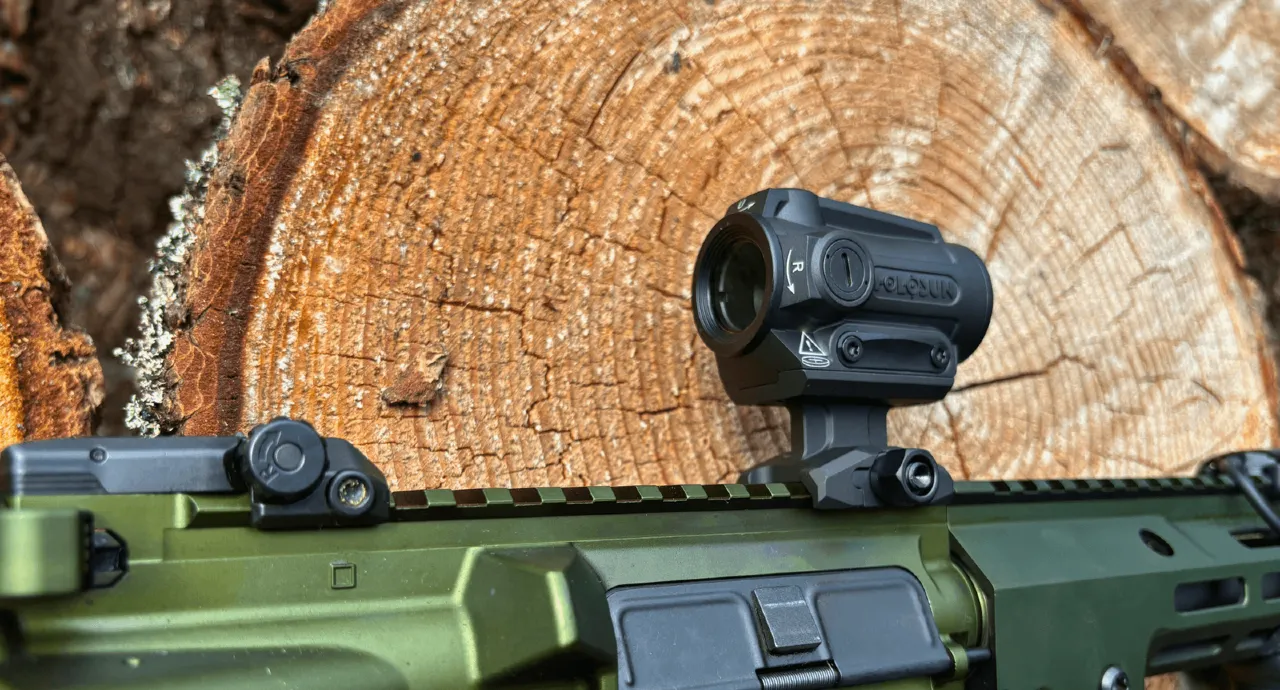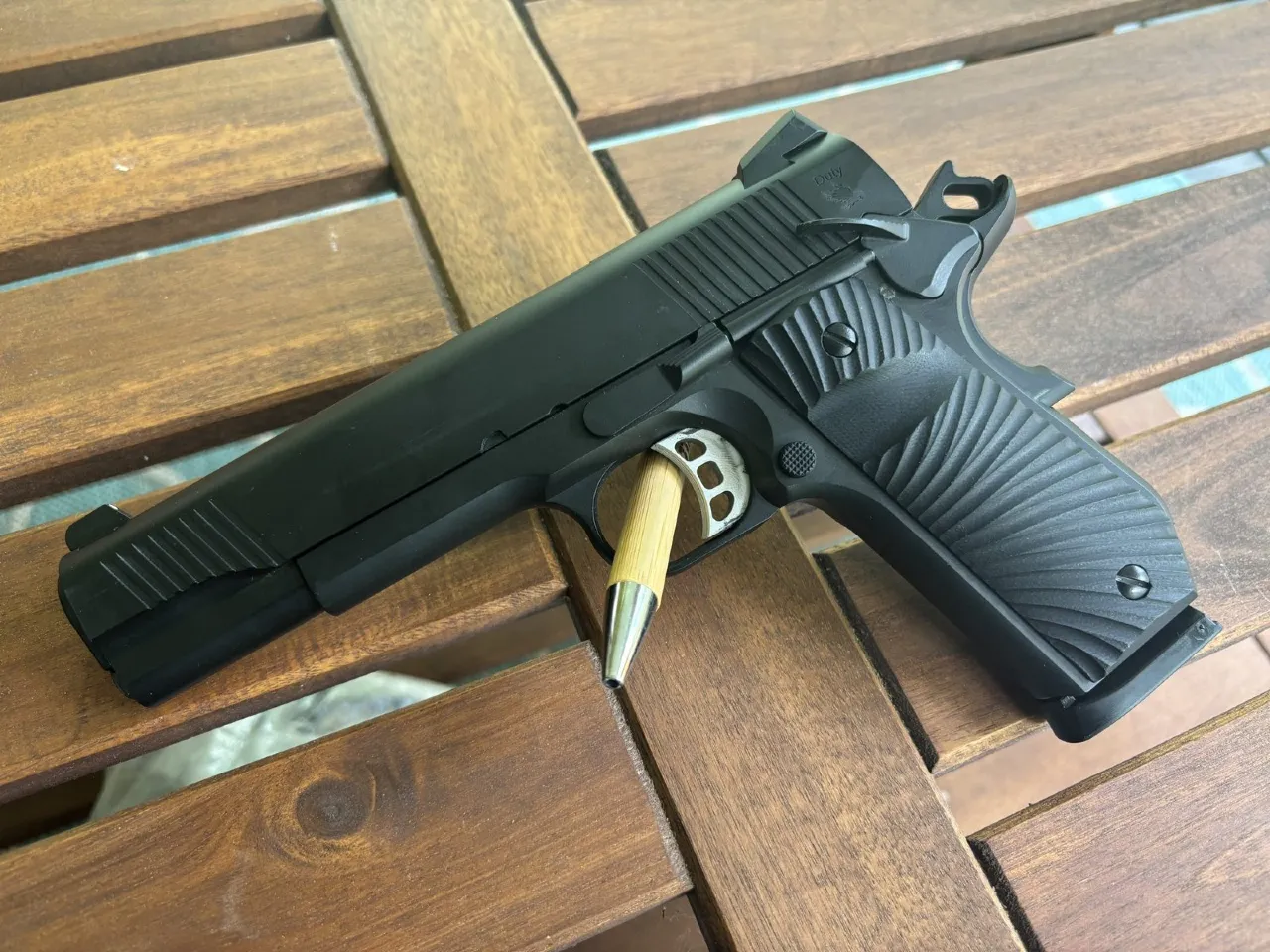Building your own AR-15 lower is the most complex part of an AR-15, but it really isn’t too bad.
With some basic tools, a couple of hours (for your first lower, maybe 30 minutes for your 3rd+), and this guide — you’ll quickly be able to assemble your AR-15 lower and get it ready for an upper!
BONUS OFFER: Get your free shooting range targets to print at home!
Get your free targets to print at home!
Required Tools
I use slightly more than the bare minimum tools because a couple of small upgrades makes everything a lot easier.
For the lower parts kit, there really isn’t much difference between all of the options out there. Some will come with enhanced bolt catches or trigger guards or won’t come with a trigger or grip. What fits you best depends on what trigger, what lower, and what grip you want to use.
Mix and match so that you have the combination that you want.
I normally choose a better trigger than the stock mil-spec version included in an LPK and I normally use a different grip.
Aero Precision’s AR-15 Lower Parts Kit without a grip, trigger guard, or trigger is perfect for me.
For this build, I combined that LPK with a LaRue MBT-2s, a Magpul Trigger Guard, and a Mil-Spec A2 Grip I had in my spare parts box.
Personally, I strongly recommend:
- Real Avid Smart Bench Block
- Real Avid Accu-Punch AR-15 Kit
- Cleaning Mat (any brand, I just happen to have a Real Avid one)
Lastly, I used the cheapest Castle Nut Wrench ever made. I can’t find this one for sale anymore, but there are dozens that are similar. Whatever the cheapest one is more than enough.

Magazine Catch Assembly
First, find your mag catch parts — you’ll need the button, spring, and arm.

Slide the arm into the magazine catch cutout on the left side of the lower and pass the threaded part of the arm through the hole to the other side.


Set the spring over the threaded part of the arm, the orientation of the spring doesn’t matter in this case.

Place the button on top and press down firmly. Once seated on the threaded arm, twist the button one full rotation to get the threads started and keep the spring captive.

Turn your lower to the side and press down firmly on the magazine release button, exposing the arm from the lower.

See the light? You need to screw the button down until the release arm no longer completely clears the lower.
If you can see daylight between the arm and the lower, that’s bad.
I like to press very firmly on the button and then turn the release arm like a clock arm to screw it down.


Once seated, you’re finished with this part! Easy, right?
Popular Articles
Trigger Guard Assembly
Not all lower come without a trigger guard. Don’t worry about this part if you already have one set up or forged into the lower itself.

I used a Magpul trigger guard and this one is a little different than most others.
The rear is a normal roll pin. You should have two roll pins in your LPK, the trigger guard uses the larger of the two.
Upfront, Magpul uses a set screw while most others use a detent.
The detents are normally installed already and just require being slipped into place.
For the Magpul, align the trigger guard inside the housing and simply screw in the detent.

The rear part uses a rolling pin.
Brace the trigger guard housing on your bench or Smart Block.
Align the pin and the housing with the trigger guard and give it a good wack with the Accu-hammer (or whatever small hammer you’re using).
Make sure to support the ears of the housing so they don’t break.


Once flush, it’s done!
Bolt Catch Assembly
First, grab the parts (you saw that coming, right?).
You’ll need the catch, spring, weird plunger, and smaller of the two roll pins you started with.

Set the plunger on top of the spring and place them into the hole inside the bolt catch area. You don’t really need tweezers for that, I’m just using them to show how they fit together.


Place the bolt catch on top of the spring and plunger.
Place the roll pin into the starter punch (the punch that has a cup at the end instead of a flat surface). This lets the roll pin drop down into the punch a short way and makes installing it a lot easier.
If you don’t have a starter punch… use a normal one.


Set the punch with the roll pin against the lower so that the cutout part of the punch is facing the lower.
Align it with the roll pinhole of the bolt catch and give it a good wack with a hammer.
This is a three-handed step but if you have a decent-sized hand, you can hold the punch, the catch, and the lower with one hand and the hammer with your other.

If you have small hands… Well, good luck.
Once the roll pin is mostly in, you can switch to a normal punch and finish driving it home.

Once flush, you’re done!

Trigger Assembly
You’ll need the hammer, the trigger, hammer, and trigger springs, the two trigger pins, the disconnector, and the disconnector spring.

Assemble the springs on the trigger and hammer-like in the picture.
Take your trigger and place the disconnector spring into the hole so the fat side of the spring is in the bottom.


Next, set the disconnector on top of the trigger and then the trigger down into the lower.


Line up the hole in the trigger with the lower of the two trigger pinholes. Press one of the pins into the hole until it is flush.
Most trigger pins don’t need a hammer, but some do. If yours does — start off with gentle hits.
Sometimes you think you need a hammer when really things are just misaligned.
If light hammer taps don’t drive the pin through, make sure things are lined upright.



Once flush, you can move on!
The hammer springs are a little more annoying than the trigger was. The long parts of the trigger spring need to fold back to give spring tension.
Line them up as in the picture and force the hammer forward until it is lined with the front trigger pinhole.


Once lined up, set the pin and push it through. Again, it should go in with just your hands but you might need a hammer.
Start off gently. It’s very common for this pin to get misaligned on the far side.


Done!
Safety & Grip
This is everything left over at this point

Something to ID first though are the takedown detents and the safety detent.
The two takedown detents are copies of each other, but the safety one is larger and has a pointed nose with a flat base.

Knowing the difference between these helps in a moment.
You will also have four springs. Two are identical, these are for the takedown pins, and one is a little shorter and a little thicker with tight rings, this is for safety. The fourth is about the same length but has much looser rings and is used for the buffer spring retention plunger.
I like to start with safety and grip.
Set your safety in the hole with the safety selector set to “fire”. It will take some wiggling and pressure to get it through and flush with the other side.
DO NOT USE A HAMMER. While it will take some wiggle and jiggle, it should never need a hammer. If you can’t get it through, it’s because it isn’t lined up.
If you need to, grab a punch and use it to press down on the trigger bar under the safety.

Flip the lower over and place the safety detent with the point towards the safety.


Take your grip and set the detent spring into the small hole at the top of the grip.


Carefully hold the lower so that the trigger is facing the ceiling and connect the grip and lower. Slide them so the spring is pressed against the safety detent.

Holding them together, install the grip screw.
Be careful with the grip screw and don’t cross-thread it. The screw is steel and the lower is aluminum and you can really mess up the hole if you let it cross-thread and force it.


Takedown Pins & Buffer Tube Assembly
Start with your butter tube. Slide the castle nut on with the large cutouts facing the rear of the buffer tube.
Screw down the castle nut all of or at least most of the way back.

Slide the retention plate over that with the tab set into the grove of the buffer tube and the raised tab facing the front of the buffer tube.

Grab your lower and set the smaller of the two takedown pins into the rear takedown pinhole. Go in from right to left and face the grove towards the rear.

See that hole in the picture above? The small one on the right-hand side of the back of the lower?
Place one of the detents in that hole followed by one of the springs.

Careful not to dump these out. The detent should fit into the grove of the takedown pin. Wiggle the takedown pin so that these are lined up.
Twist in your buffer tube into the lower. Careful not to knock the spring out.
Keep going until the buffer tube is just about to cover the buffer retention hole.


Install the retention spring with the retention pin on top into the hole. Twist the buffer tube slightly more so that the tab of the buffer tube slides over the retention pin and traps it in place.


Slide the retention plate down until flush with your lower. Hand tightens the castle nut by pressing it down until it is secure against the plate.
Use a castle nut wrench to give it a good twist.


If you want to stake your castle nut, you can. Personally, I normally don’t. A little bit of Loctite on the threads of the castle nut is a great way to secure it in place without having to stake it.

The front takedown pin is a huge pain in the ass. Don’t be shocked if you send a few detents flying.
If you’re doing more than one lower in your lifetime, you might want to get a Real Avid Takedown Pin tool.
Otherwise, a dull kitchen knife or an Exacto knife will help.
On the front of the lower, drop the last takedown spring into the hole.
Using some tweezers or needle-nose pliers, press the detent onto the spring and hold it in place using a knife.


And, yes, it is far harder than it sounds.
Once you trap it, slide the takedown pin over the knife. Remove the knife and press the takedown pin the rest of the way.

Last but not least, just drop the buffer spring into the tube, set the weight on top, and cram it all down in there until it is past the retention pin.


Install your stock according to the manufacturer. Most of them just slide on the rear of the tube. You may need to raise a lever or pin to get it started.

Once installed — that’s it! You’re done.
Wrapping Up
See, now that wasn’t so bad — right?
It gets a lot easier once you do it a few times, but overall this is a pretty smooth AR-15 Lower Assembly process.
Let us know if you have questions in the comments!

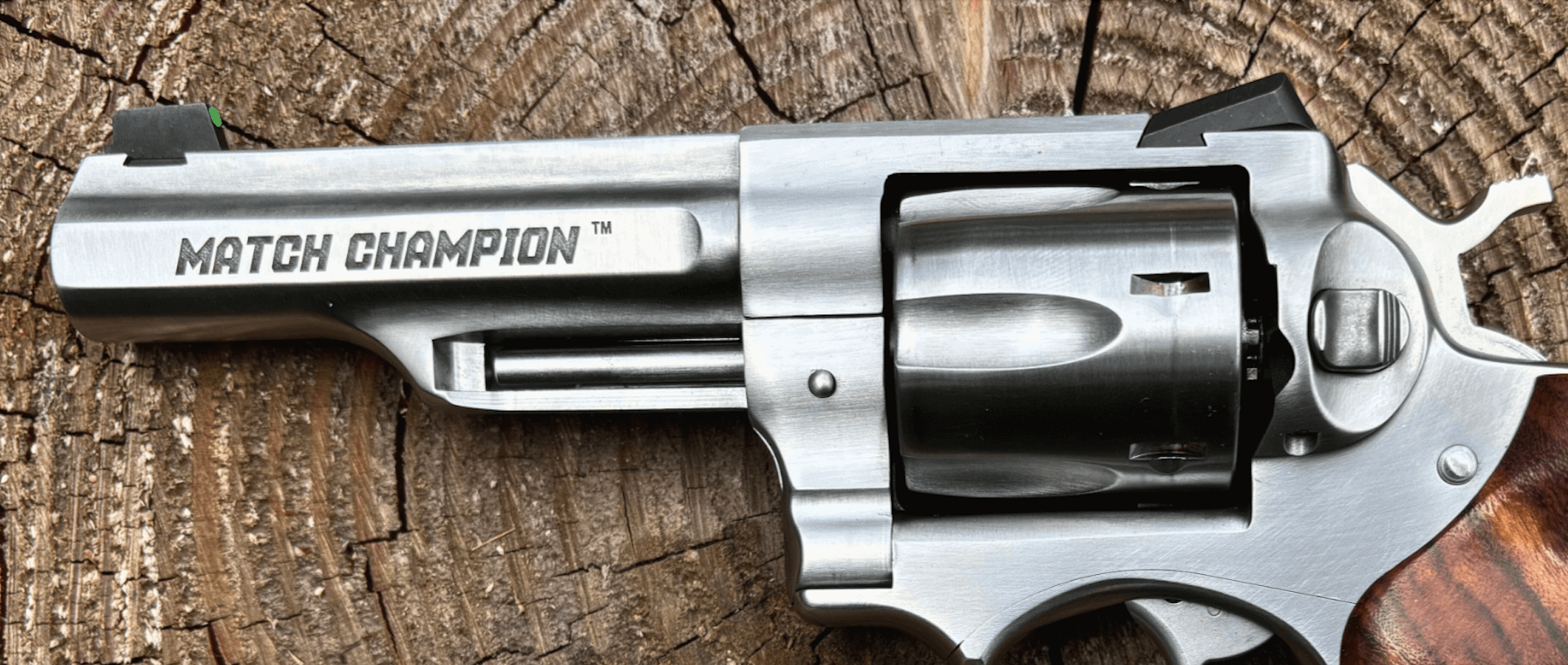




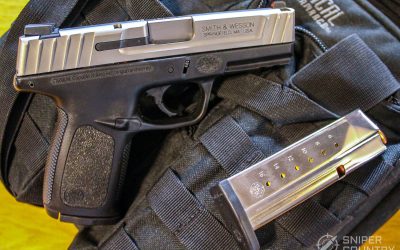
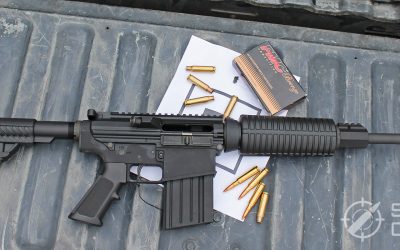


![9mm Glock Models [Ultimate Guide]](https://snipercountry.com/wp-content/uploads/2018/10/Glock-17-vs-Glock-19-vs-Glock-26-vs-Glock-41-vs-Glock-43-WM-400x250.jpg)
![Handgun Caliber Chart [2025 Ultimate Guide]](https://snipercountry.com/wp-content/uploads/2018/10/Handgun-Caliber-Comparison-400x250.jpg)
![Rifle Calibers [Ultimate Guide]](https://snipercountry.com/wp-content/uploads/2018/12/Header-1900-400x250.jpg)




